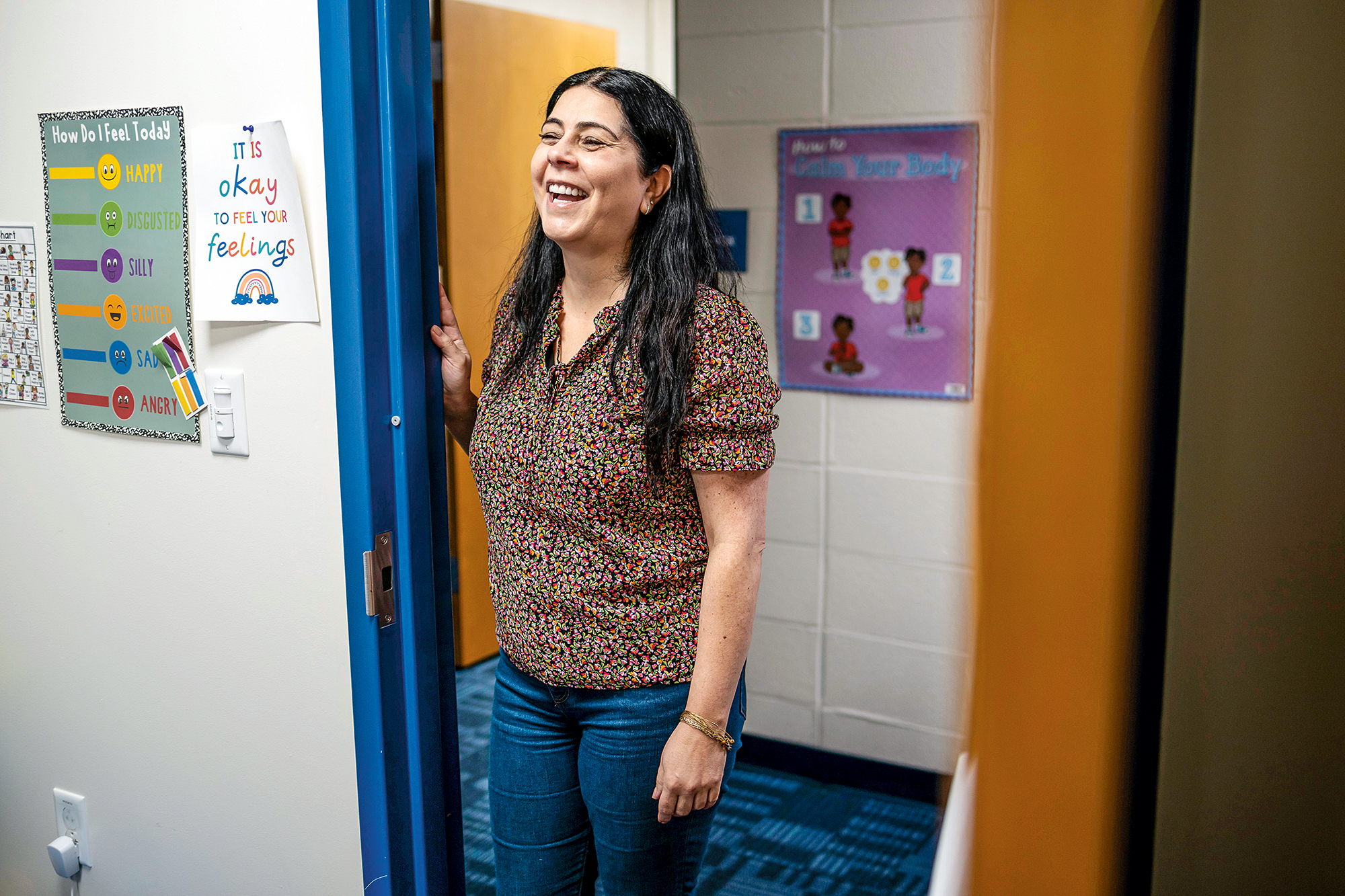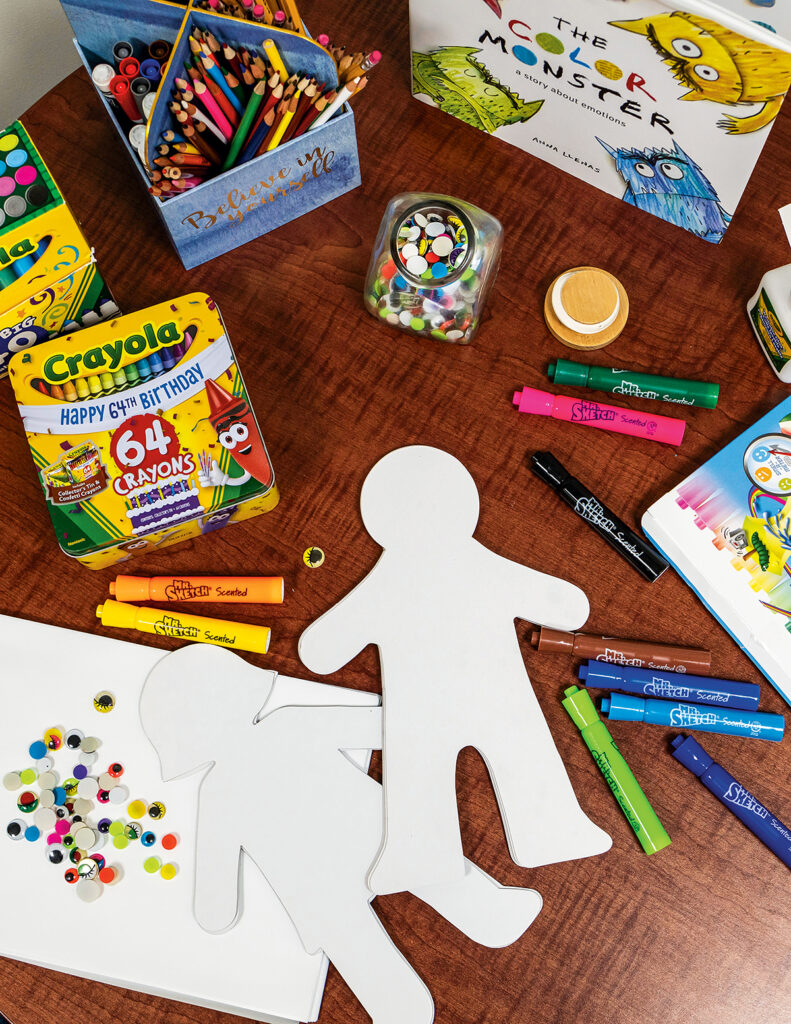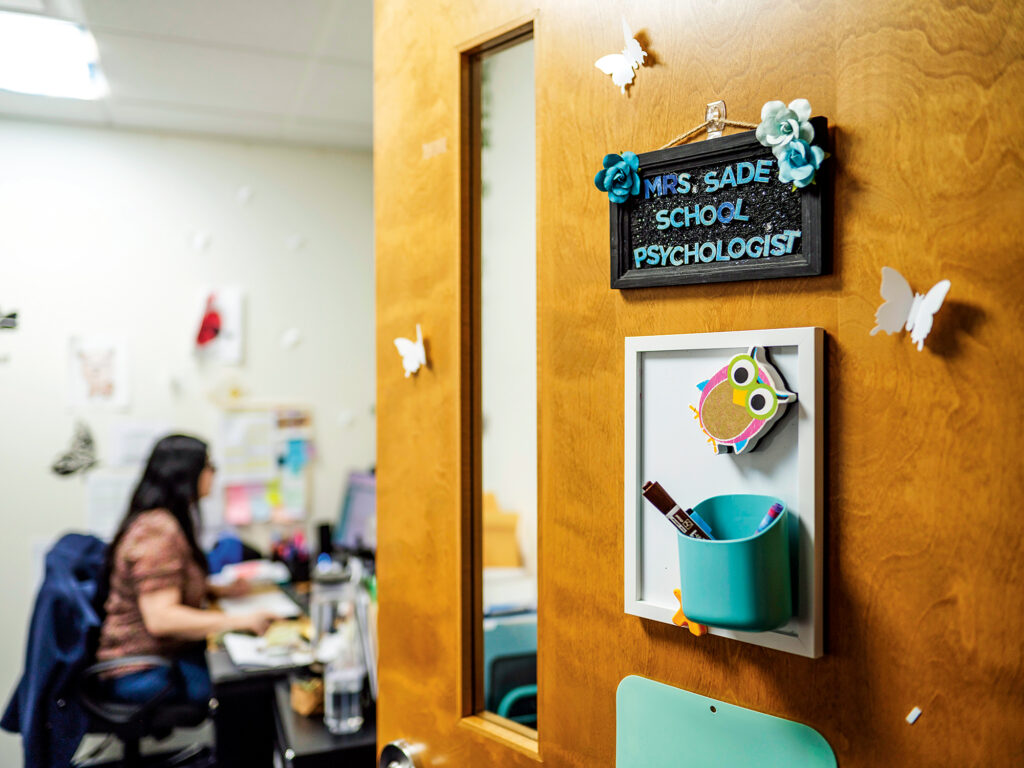Expressive Therapy

After she observed how effective creative therapies could be — her first exposure came during her training — Ifat Sade started working them into her practice. (Photo: Karsten Moran)
By Kenna Caprio
Ifat Sade’s office is a safe space in which her students can express their emotions, concerns and fears, and learn how to cope, all of which leads to overall emotional well-being. But sometimes, children can have a hard time communicating through words, says Sade, PsyD’24 (Metro), a school psychologist for the Manville (N.J.) School District. She is in her 10th year with the district, and has worked in education for 30 years.

Art therapy is an effective tool for young patients. (Photo: Karsten Moran)
“Creativity and innovation are essential for effectively addressing the diverse needs of students,” she says. If traditional therapeutic approaches aren’t working, she can tailor individual therapies as needed. These interventions may include art therapy; movement or dance therapy; sand tray therapy; creative journaling; or drama therapy. Through these nonverbal techniques, children can often express more complicated feelings.
“I decided to incorporate expressive therapies into my sessions because I realized the profound impact they can have on emotional expression and healing,” says Sade. “This is especially true for younger children or students with cognitive or communication deficits. Art, music and dance therapies provide alternate avenues for self-expression, allowing students to communicate in ways that feel more comfortable and natural for them. Expressive therapies capture their interest and encourage participation.”
Sade started working art activities into her sessions early on in her career as a school psychologist, after observing the benefits during her training.

Welcome in! (Photo: Karsten Moran)
“Creating art or engaging in movement can help children process their experiences and gain insight into their feelings and behaviors, leading to greater self-awareness,” says Sade. “Therapy itself helps children feel heard and validated, which is essential for their emotional development. Therapy also equips children with the tools to cope with anxiety, anger, sadness and other emotions, fostering resilience.” Counseling can also allow students to learn self-control, improve their academic performance and provide them with the ability to better handle stress.
“In my role, I engage in assessments, provide counseling and collaborate with educators and parents to develop interventions tailored to individual needs,” she says. “Incorporating expressive therapies has enriched my practice, allowing me to meet students where they are and support their emotional and social development holistically. It’s been incredibly rewarding to see students thrive through these creative modalities.”